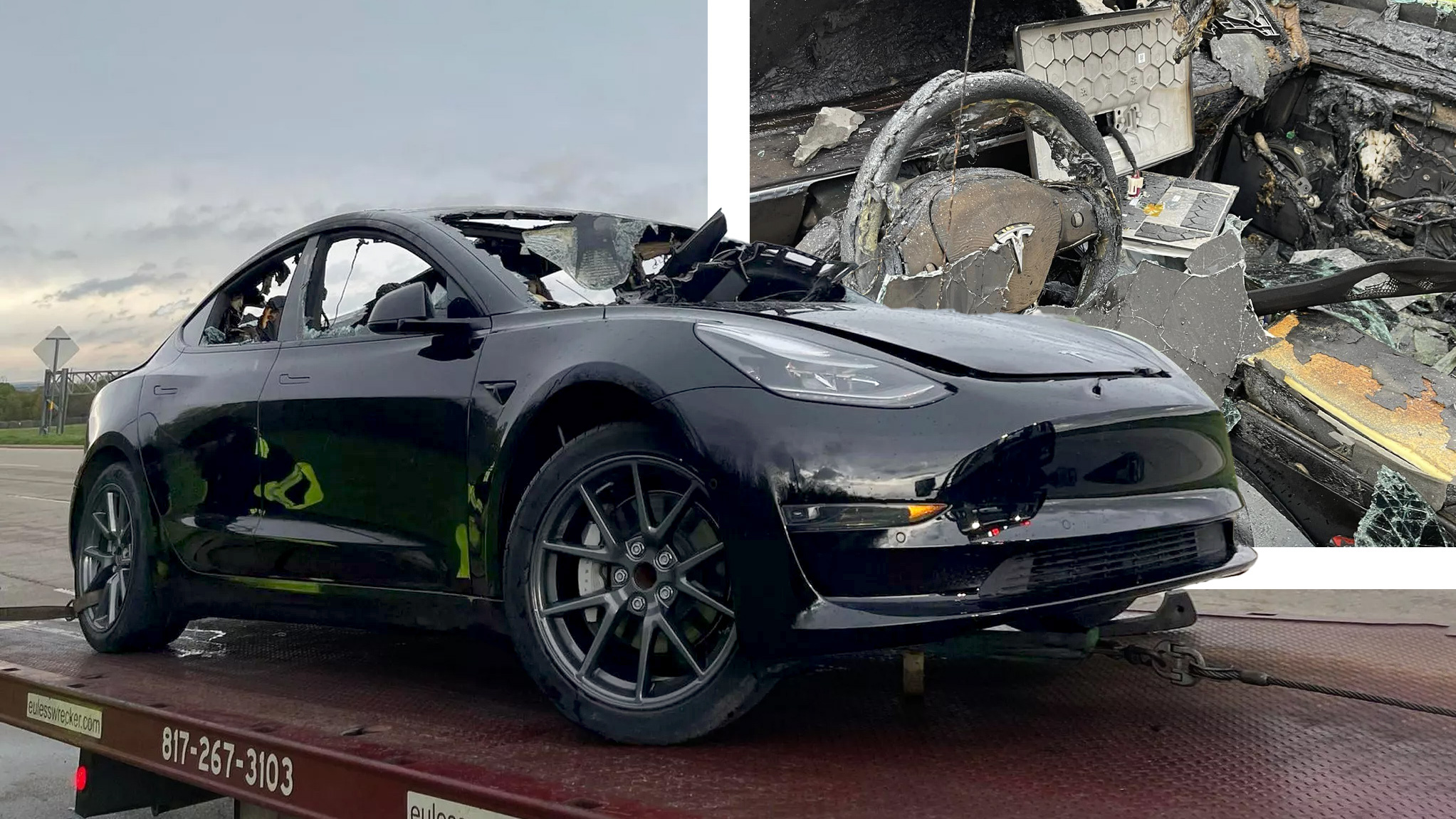Um. @brainhouston ? I'm a EE. I certainly do know how electricity works. I've worked on ridiculously high voltage, high power systems (think: megawatt RADARs), and other stuff where I have, literally, picked up the smoked remains and diagnosed What Went On. When What Went On included fun stuff like lightning strikes.I don't think u understand how electricity works...Imagine a scenario where someone's done their own shoddy repair work, and their car is intermittently shorting a live wire to the car's body. Someone gets out of their car next to it and is lethally electrocuted just because their shirt grazes the body of the vehicle.
This scenario is not physically possible...
@father_of_6 's scenario is very believable. In fact, it used to happen all the time in the 1950's and later; it's one of the reasons that power tools come double-insulated these days. Some wire would get loose, typically the "hot" (as compared to hot and neutral), and the clothes washer, drier, or drill would then be at the full 120 VAC with respect to neutral. The poor schmuck using whatever-it-was would come in contact with, say, a bit of piping (easy to do in a laundry or garage) with a foot, the other arm, or whatever, be in contact with the live shell, and that would be all she wrote. Lots of people got killed that way.
With double insulation everything, hot and neutral, are isolated from the outside shell of the equipment. Now, even with that, it's possible that a hot wire might come loose and put potential on the metal shell; but it's much less likely. Which cut down on deaths quite a bit. Even with that, most high power gear has not just two wires (hot and neutral), but a ground wire as well. The idea being that a hot coming in contact with a grounded shell of some equipment, like a washing machine, will simply blow the breaker, since, at the breaker panel, neutral and ground are bonded together.
So, let's take it as a given that Teslas are double insulated; as part of that, the negative and positive terminals of the battery, the terminals on the motors, and anything else associated with the high voltage would both be isolated from the shell of the car. I dunno, Tesla may or may not have done that. For one thing, most automotive electrical systems don't do that; the negative terminal of the 12V battery is bonded to the shell of the car. But, just for argument, let's say that Tesla did isolated both sides of the battery, everything hooked electrically to the battery, and that includes the charging system, motors, and everything else (like the HVAC) that's hooked to that battery.
Fine. The car's got a salvage title. A couple of weeks ago, on another thread on TMC, a bunch of us were chatting with a New Zelander who had a salvage car, dragged out of a flooded area, liberally coated with mud. We kind of warned him he was in for it, but it's a hobby. It's nice to have a hobby, and his was to get the car into working order.
So, mud. Mud with water. Mud with water permeating everything, including the electronics and wiring. Mud with water is conductive. It's one thing if we're talking about power cables with rubber seals all over; it's another if water and silt has gone higher than the dash, and the car's sat in it. Everything was exposed to that stuff.
Worse, mud and water makes things corrode. Think some piece of metal bolted to another piece of metal on the bottom of the car is still in electrical contact with the rest of the frame? Ha. Think that something on the negative terminal is connected to some $RANDOM part of the frame, and something with a line to the positive terminal is connected to some other portion of the frame? In this kind of muddy condition, everything is connected to everything. And it doesn't take full voltage to kill somebody; anything over 60V or so can do it, and one only needs a hundred mA to do the job.
Beyond that: 60V and a 100 mA is enough to heat something to the point of catching on fire, at which point all heck can break loose. And it's not like any of these connections are stable: chemical action just runs its course.
For this guy, the assumption is that everything is damaged and dangerous unless thoroughly proven otherwise.
Finally: This guy simply had a car that had been soaked in a flooding river for a while. From the pictures, nothing had actually run into said car. Salvage title cars are often the results of accidents where serious metal bending has taken place. Teslas that have been in horrific accidents have caught on fire, just like a gasoline-based car can. My point is that the "fire" part might not happen right off; it can take a while.
Look: I never said that a salvage title vehicle can't be brought back to life. Safely, even. The problem isn't with the car: It's with the people doing the work. People, both of nefarious and non-nefarious bent, like to take short cuts. And if there's some kind of mandate that says that Tesla has to take all comers, it's not a matter of if we get an exploding car at a Supercharger, it's simply when.




